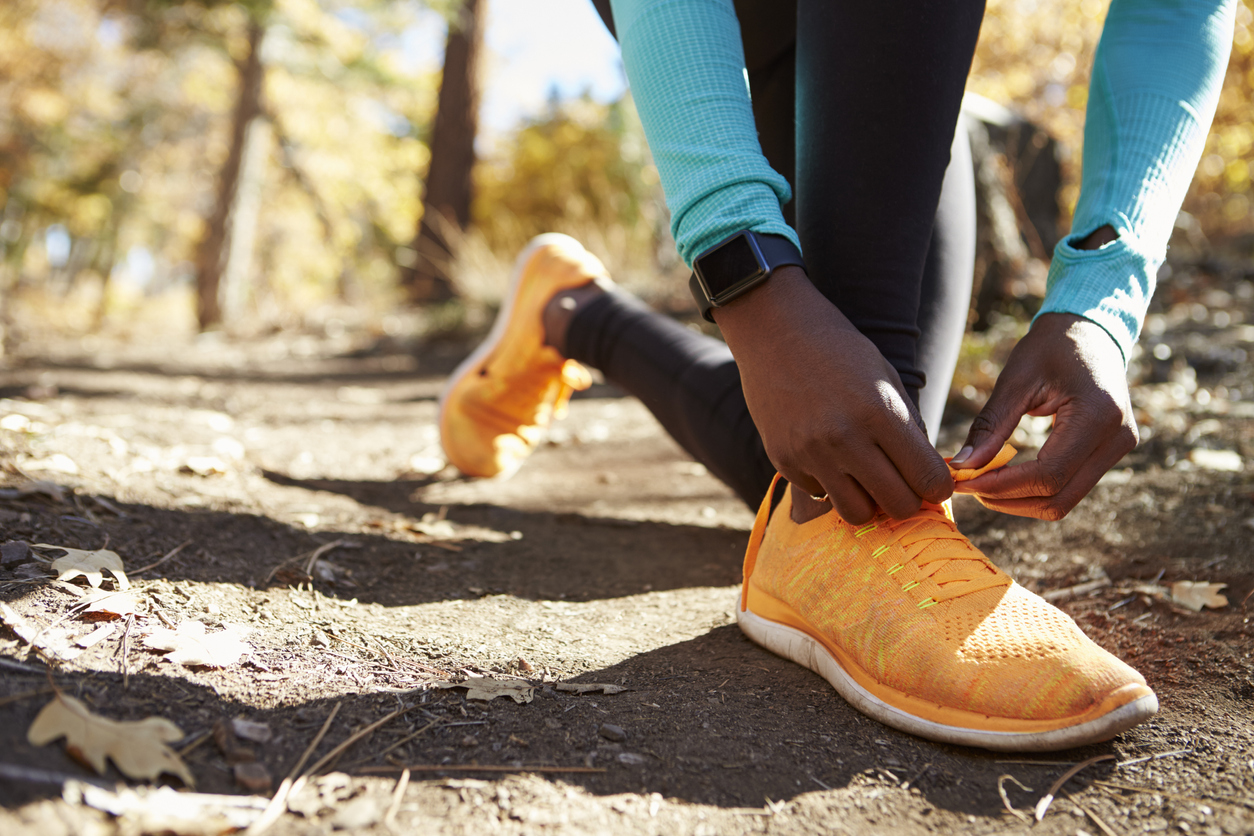
The type of shoes you wear throughout your day during different activities can greatly affect your foot health. Wearing the proper shoes can support you in excelling in your sport as well as preventing any pain or injuries. While you may only own one pair of shoes to do exercises in, you may be surprised to find out that it’s best to wear different types of shoes for different workouts.
For When You’re Lifting
Lifting is unsurprisingly pretty hard on your body, so having good shoes to support you through lifts is important. The right weightlifting shoes will increase your stability due to their broad base, small arch cushion, and large heel lift. This structure allows for your knees to come forward over your toes when you squat, which takes strain off your ankle and helps your torso be more upright.
For Cross-Training
Just like lifting, cross-training is very impactful on your body, and having the wrong shoes can set you back. Cross-training shoes support you during functional exercises such as running and jumping. They are breathable but also sturdy and comfortable. If you just started cross-training and aren’t sure exactly what kind of workouts you’ll be doing, these are great shoes to go with.
These shoes have a good balance of cushioning so that you’re able to ground yourself with the floor during weightlifting, but also land comfortably from jumping. They also have a less flexible sole, which allows for stability during lifts but at the same time allows you a little bit of flexibility during other movements. They also have cushioning in the forefoot to absorb shock during landings, and also helps prevent rubbing and blisters.
For CrossFit
If you partake in CrossFit, you most likely take your exercises very seriously, and should have the right shoes to reflect and support that. CrossFit shoes have little to no cushioning so you have more connection with the floor and can balance better. They also have rigid soles so you have better contact with the floor during weight exercises and are more efficient at load transfer.
These shoes also have a wide toe box, which allows for you to spread your toes out to distribute your weight evenly to be more balanced during lifts. A thick toe cap also prevents injuries from the top of your foot and toenails, such as during burpees. A plastic insert in the back of the heel known as a heel counter also aids in stability and prevents extra wear and tear.
Many also have a rope guard, which makes the shoes last longer and prevents wear and tear from rope climbs.
Outdoor Trail Running
If you prefer an outdoor workout, making sure you have the proper shoes to tackle the outdoor’s tough terrain is essential for a good workout. Trail shoes are typically lightweight but supportive at the same time, and are water-resistant. They also usually have better tread to handle outdoor weather conditions; make sure the ones you select have deep grooves on the soles so that the traction is up to par with dirt, rocks, or hard surfaces you might encounter.
It’s also important to find a pair with supportive insoles, as they will help prevent excessive foot rotation. An outdoor trail has a lot more potential to cause issues such as falling or ankle twisting, so the right shoes will let you run longer with more peace of mind. Trail shoes also usually have toe guards that will protect you from the elements, including things such as thorns, sticks, or rocks.
Contact Us Today
Working out has great benefits for your body, but wearing improper footwear can do more harm than good. Our foot care specialists will be able to assist you in finding the right shoes and exercise that will benefit your foot and overall health. Contact us today to set up your appointment!